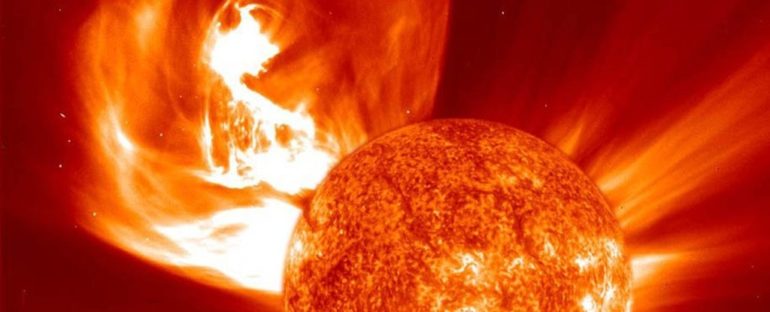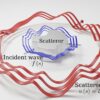Our Sun isn’t exactly a serene ball of scorching hot plasma. In fact, it belches out colossal eruptions on a somewhat frequent basis; such coronal mass ejections, when directed at Earth, are the cause of geomagnetic storms.
From near-Earth space, we can measure them pretty well with satellites and other spacecraft. But in 1998 something incredibly fortuitous occurred. Not only was a spacecraft in near-Earth space able to measure a coronal mass ejection (CME), another spacecraft out past Mars lined up in just the right way to also receive the solar blast.
This meant the two spacecraft were able to measure the same CME at different points of its journey from the Sun, offering a rare opportunity to understand how these powerful eruptions evolve.
Coronal mass ejections may not be as visible as solar flares (which they sometimes accompany), but they’re much more powerful. They occur when twisted magnetic field lines on the Sun reconnect, converting and releasing tremendous amounts of energy in the process.
This happens in the form of a CME, in which vast quantities of ionised plasma and electromagnetic radiation, bundled up in a helical magnetic field, are launched into space on the solar wind. When they stream past Earth, CMEs can interact with the magnetosphere and ionosphere, creating observable effects such as satellite communication problems and aurorae.
But what happens to CMEs when they’re out past Earth, in interplanetary space, has been a lot more difficult to study. We have far, far fewer instruments out there, for one thing. The odds of two spacecraft at widely separated distances from the Sun detecting the same CME are incredibly low.
Luckily, that’s what happened in 1998 with two spacecraft designed to study solar wind. NASA’s Wind spacecraft, in the L1 Lagrangian point at approximately 1 astronomical unit (the distance between Earth and the Sun), first observed a CME on 4 March 1998.
Eighteen days later, that same CME arrived at Ulysses, a spacecraft that, at the time, was at a distance of 5.4 astronomical units, more or less equivalent to the average orbital distance of Jupiter.
Now astronomers have examined the data from both of those encounters to characterise, for the first time, how a CME changes as it travels deeper into the Solar System. In particular, they studied the magnetohydrodynamic evolution of the embedded magnetic cloud.
Wind data (left) and Ulysses data (right). (Telloni et al., ApJL, 2020)
They found that, in the 4.4 astronomical units between the two spacecraft, the helical structure of the magnetic cloud eroded significantly. The team thinks this was likely due to an interaction with a second, trailing magnetic cloud that travelled faster than the first, catching up to it and compressing it by the time it reached Ulysses.
This could explain why the helical structure of the magnetic cloud in the CME became more twisted by the time it reached 5.4 astronomical units – rather than less, as might be expected. The magnetic interaction between the two clouds could degrade the outer layer, leaving behind a more twisted core.
“What clearly emerges from this analysis is that at 5.4 astronomical units the second magnetic cloud is heavily interacting with the first one,” the researchers wrote in their paper.
“As a result, the magnetic structure of the preceding magnetic cloud is strongly deformed. In fact, its large-scale rotation extends well beyond the rear of the following magnetic cloud and represents de facto a form of background magnetic field rotation.”
It would be fascinating to see more studies on this topic – and, as lucky as the observation was, we may just get them. The researchers note that we are in the early stages of what might be considered a “golden age” of solar physics.
With NASA’s Parker Solar Probe, ESA and JAXA’s BepiColombo and ESA’s Solar Orbiter all orbiting the Sun at varying distances, it could only be a matter of time before the stars – or the spacecraft, in this case – align.
The research has been published in The Astrophysical Journal Letters.



